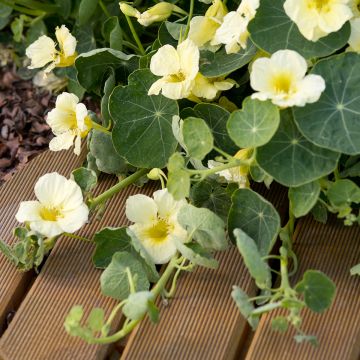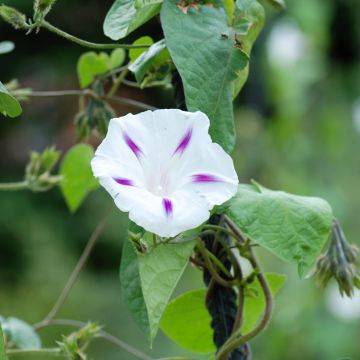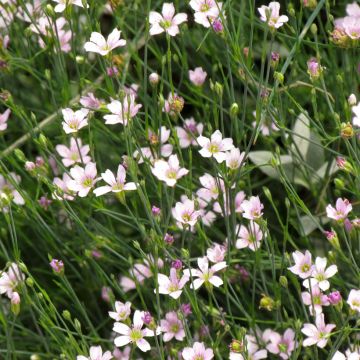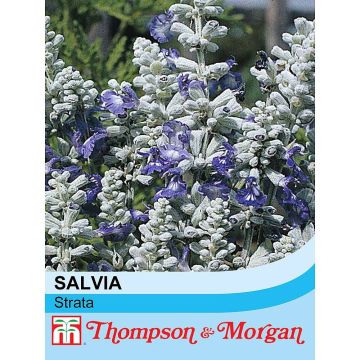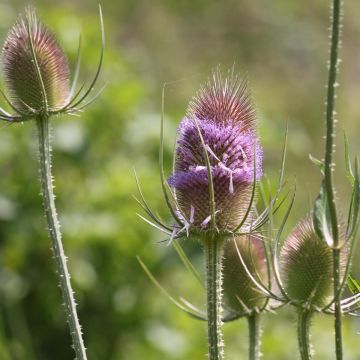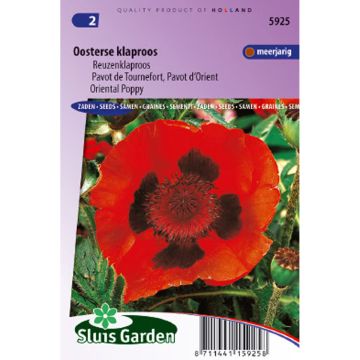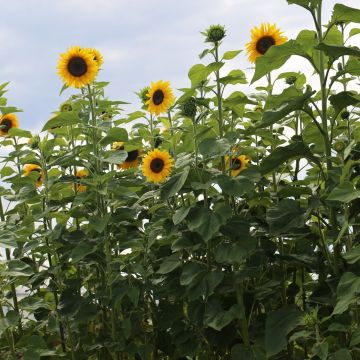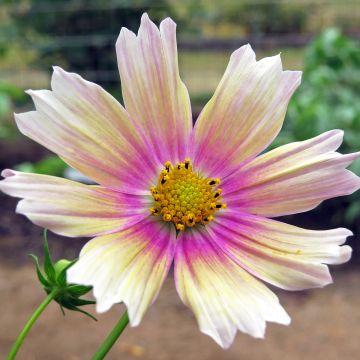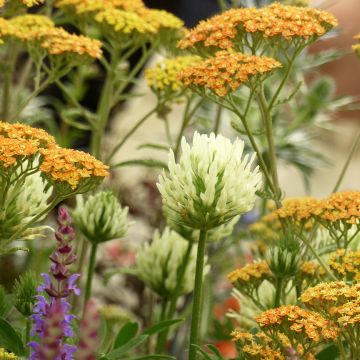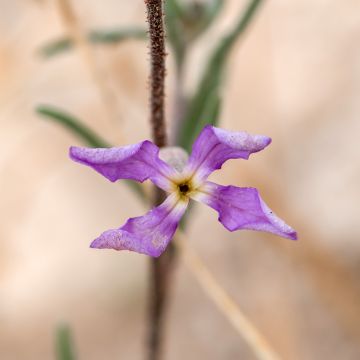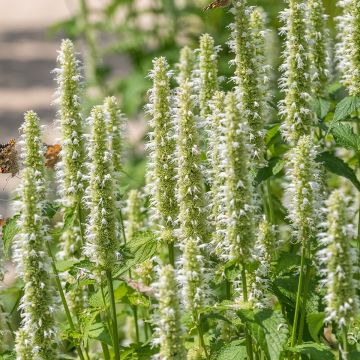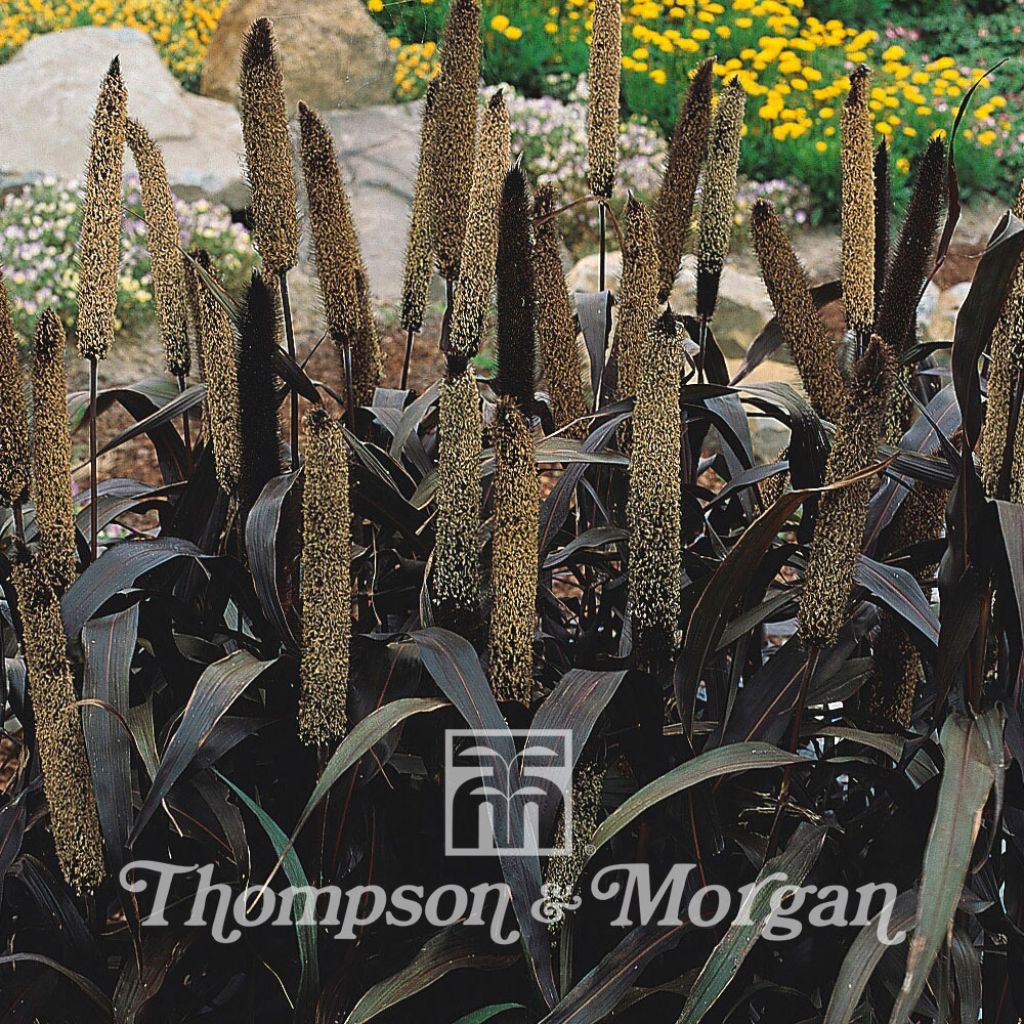

Pennisetum Glaucum Purple Majesty F1 Hybrid
Pennisetum glaucum Purple Majesty
Pennisetum glaucum Purple Majesty
Pearl millet, Cattail millet, Bulrush millet
Like the others, nothing, no germination.
FABRICE, 20/06/2019
This plant carries a 6 months recovery warranty
More information
We guarantee the quality of our plants for a full growing cycle, and will replace at our expense any plant that fails to recover under normal climatic and planting conditions.
Seed-only orders are dispatched by sealed envelope. The delivery charge for seed-only orders is €3.90.
Does this plant fit my garden?
Set up your Plantfit profile →
Description
The Pennisetum Glaucum 'Purple Majesty' or pearl millet is a tall annual grass that becomes dark purple, almost black, in the sun. The young, bright green shoots with red veins darken as the season progresses.
The Pennisetum Glaucum is an herbaceous annual belonging to the Poaceae family - formerly known as grasses - cultivated in the Sahel, India, or Pakistan to be consumed as a staple food. The seeds produced are also called little millet in contrast to the great millet: sorghum. It is the most cultivated variety in the world and dominates where no other cereal crop grows.
Its clump is very compact. The foliage is upright and, when young, is tinged with bright green and red veins. The long, narrow, ribbon-like leaves darken gradually until they become entirely dark purple, almost black. The Pennisetum Glaucum 'Purple Majesty' is a tall variety that reaches a height of 1.50 to 2 m (5 to 7ft) in one season. The flower head is a long paniculate or false spike of 20 cm (8in) called a candle, with beige-pink glumes in summer and tiny white, grey, or yellow seeds resembling sweetmeat pearls, which earned it one of its nicknames.
It will offer you the most beautiful spikes and its most beautiful silhouette in dry, sandy, and poor soil in a hot and dry situation. Under these conditions, it will also show you its prettiest purple because its colour directly depends on the intensity of light it receives. Play with contrasts by associating it with plants with grey or blue leaves, such as Lygeum spartum, or match it with flowers in fresh colours that have the same inclinations for heat and drought, such as Sedum Frosty Morn with its sorbet colours or Pennisetum macrourum with its pinkish plumes. Its structuring aspect should be considered, whether alone or in a mass. In a small garden, it can serve as a hedge: you will enjoy its height without worrying about excessive width. As a plant with a notable architectural shape, it can easily create clear boundaries between different garden areas. Additionally, this Pennisetum has the advantage of controlling soil erosion thanks to its root system.
You can easily collect the seeds of this tall annual to reproduce your sowings the following year. Collect them before the first frosts, as they do not withstand them. However, you can keep one or more of these beautiful purple spikes as ornaments for the winter. Moreover, you will make birds happy.
Report an error about the product description
Flowering
Foliage
Plant habit
Botanical data
Pennisetum
glaucum
Purple Majesty
Poaceae
Pearl millet, Cattail millet, Bulrush millet
Cultivar or hybrid
Other Thompson and Morgan seeds
Planting and care
Sow the seeds indoors from February to April on the surface, burying them under 3 to 4 cm (1 to 2in) of a good seed-specific compost that you keep moist but not excessive. Cover the seeds with a pinch of vermiculite and maintain a constant temperature of 20 to 25°C (68 to 77°F). It will take 3 to 10 days before the young shoots appear. Do not exclude light as it aids germination; when they are large enough to handle, transplant them into larger pots (e.g. 10 cm (4in) in diameter). Gradually acclimatise them to cooler conditions for a few weeks. Once all risk of frost has passed and the soil is sufficiently warmed, you can plant them in well-worked soil, taking care to space each plant 45 to 55 cm (18 to 22in) apart. If your soil tends to be heavy and compact, add medium-sized gravel or sand to make it more draining.
Sowing period
Intended location
-
, onOrder confirmed
Reply from on Promesse de fleurs
Flower seeds
Haven't found what you were looking for?
Hardiness is the lowest winter temperature a plant can endure without suffering serious damage or even dying. However, hardiness is affected by location (a sheltered area, such as a patio), protection (winter cover) and soil type (hardiness is improved by well-drained soil).

Photo Sharing Terms & Conditions
In order to encourage gardeners to interact and share their experiences, Promesse de fleurs offers various media enabling content to be uploaded onto its Site - in particular via the ‘Photo sharing’ module.
The User agrees to refrain from:
- Posting any content that is illegal, prejudicial, insulting, racist, inciteful to hatred, revisionist, contrary to public decency, that infringes on privacy or on the privacy rights of third parties, in particular the publicity rights of persons and goods, intellectual property rights, or the right to privacy.
- Submitting content on behalf of a third party;
- Impersonate the identity of a third party and/or publish any personal information about a third party;
In general, the User undertakes to refrain from any unethical behaviour.
All Content (in particular text, comments, files, images, photos, videos, creative works, etc.), which may be subject to property or intellectual property rights, image or other private rights, shall remain the property of the User, subject to the limited rights granted by the terms of the licence granted by Promesse de fleurs as stated below. Users are at liberty to publish or not to publish such Content on the Site, notably via the ‘Photo Sharing’ facility, and accept that this Content shall be made public and freely accessible, notably on the Internet.
Users further acknowledge, undertake to have ,and guarantee that they hold all necessary rights and permissions to publish such material on the Site, in particular with regard to the legislation in force pertaining to any privacy, property, intellectual property, image, or contractual rights, or rights of any other nature. By publishing such Content on the Site, Users acknowledge accepting full liability as publishers of the Content within the meaning of the law, and grant Promesse de fleurs, free of charge, an inclusive, worldwide licence for the said Content for the entire duration of its publication, including all reproduction, representation, up/downloading, displaying, performing, transmission, and storage rights.
Users also grant permission for their name to be linked to the Content and accept that this link may not always be made available.
By engaging in posting material, Users consent to their Content becoming automatically accessible on the Internet, in particular on other sites and/or blogs and/or web pages of the Promesse de fleurs site, including in particular social pages and the Promesse de fleurs catalogue.
Users may secure the removal of entrusted content free of charge by issuing a simple request via our contact form.
The flowering period indicated on our website applies to countries and regions located in USDA zone 8 (France, the United Kingdom, Ireland, the Netherlands, etc.)
It will vary according to where you live:
- In zones 9 to 10 (Italy, Spain, Greece, etc.), flowering will occur about 2 to 4 weeks earlier.
- In zones 6 to 7 (Germany, Poland, Slovenia, and lower mountainous regions), flowering will be delayed by 2 to 3 weeks.
- In zone 5 (Central Europe, Scandinavia), blooming will be delayed by 3 to 5 weeks.
In temperate climates, pruning of spring-flowering shrubs (forsythia, spireas, etc.) should be done just after flowering.
Pruning of summer-flowering shrubs (Indian Lilac, Perovskia, etc.) can be done in winter or spring.
In cold regions as well as with frost-sensitive plants, avoid pruning too early when severe frosts may still occur.
The planting period indicated on our website applies to countries and regions located in USDA zone 8 (France, United Kingdom, Ireland, Netherlands).
It will vary according to where you live:
- In Mediterranean zones (Marseille, Madrid, Milan, etc.), autumn and winter are the best planting periods.
- In continental zones (Strasbourg, Munich, Vienna, etc.), delay planting by 2 to 3 weeks in spring and bring it forward by 2 to 4 weeks in autumn.
- In mountainous regions (the Alps, Pyrenees, Carpathians, etc.), it is best to plant in late spring (May-June) or late summer (August-September).
The harvesting period indicated on our website applies to countries and regions in USDA zone 8 (France, England, Ireland, the Netherlands).
In colder areas (Scandinavia, Poland, Austria...) fruit and vegetable harvests are likely to be delayed by 3-4 weeks.
In warmer areas (Italy, Spain, Greece, etc.), harvesting will probably take place earlier, depending on weather conditions.
The sowing periods indicated on our website apply to countries and regions within USDA Zone 8 (France, UK, Ireland, Netherlands).
In colder areas (Scandinavia, Poland, Austria...), delay any outdoor sowing by 3-4 weeks, or sow under glass.
In warmer climes (Italy, Spain, Greece, etc.), bring outdoor sowing forward by a few weeks.

































